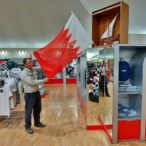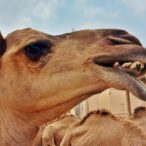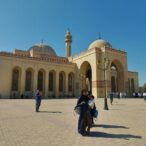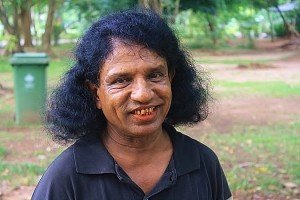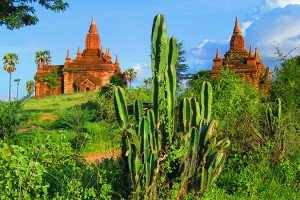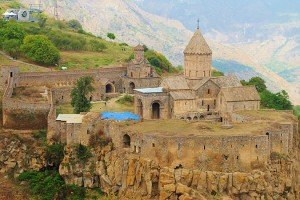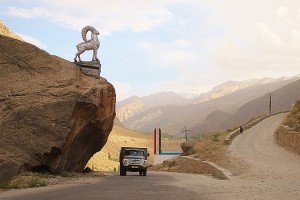Bahrain
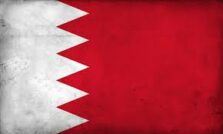
Official name: The Kingdom of Bahrain
Population: 1 865 000
Total area: 786 km²
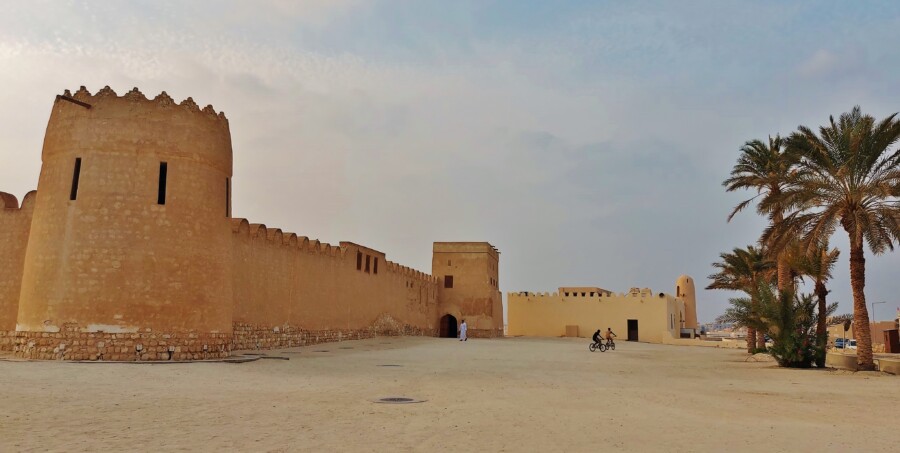
Gallery
Bahrain – tourist attractions
When I went to Bahrain I didn’t expect it to be so interesting. I believe that Bahrain should not be treated only as a transfer base because that small territory has a lot to offer. In that small area I saw old and modern cities, ancient forts, several nice beaches, desert nature and even a camel farm. The whole of Bahrain is 2.5 times smaller than Riyadh but it kept me busy for 12 days. Besides, Bahrain also doesn’t have such strict Muslim laws as Saudi Arabia. There are no megaphones on mosques, women don’t cover their faces, and people can drink alcohol and dance; but in moderation. (By the way, I asked an Arab from Saudi if he liked Bahrain. He said no because they dance and get drunk. Of course it’s not true but this opinion shows the differences in the neighboring countries of the Arabian Peninsula.)
Bahrain cities
When it comes to the cities of Bahrain, the most notable is the capital Manama. I believe that a traveller should spend the most of his time at the old Arabian bazaar, the entrance of which is the Bab Al Bahrain. Getting off at the small Manama bus station on one side is a traditional bazaar and on the other side of the street there was a promenade by the sea called King Faisal Corniche. There were several impressive buildings, palm trees by the sea and wooden fishing boats, which I think that despite the modernity they wonderfully refer to the history of Bahrain. From this promenade one can see one of the symbols of Bahrain, which is the sharp twin skyscraper Bahrain WTC. This is the heart and soul of Manama, although there are also several other impressive buildings nearby, with pictures of the Royal Family of Bahrain.
The former capital of Bahrain, Muharraq was also interesting. The center is only one street, although in 2022 I saw that historic buildings were undergoing a major renovation there. Within a few kilometers from the Muharraq bus station there are three places worth seeing. Coming from Manama I first went to the Beit Al Quran museum, where for the first time since my trip to Persia I again saw decorated copies of Korans from the centuries ago. On the way to Muharraq one cannot miss the Bahrain National Museum, which is interesting inside and very impressive from the outside. A few kilometers from the museum is Bahrain’s largest mosque, Al Fateh. I believe that it is an architecturally and culturally attractive place.
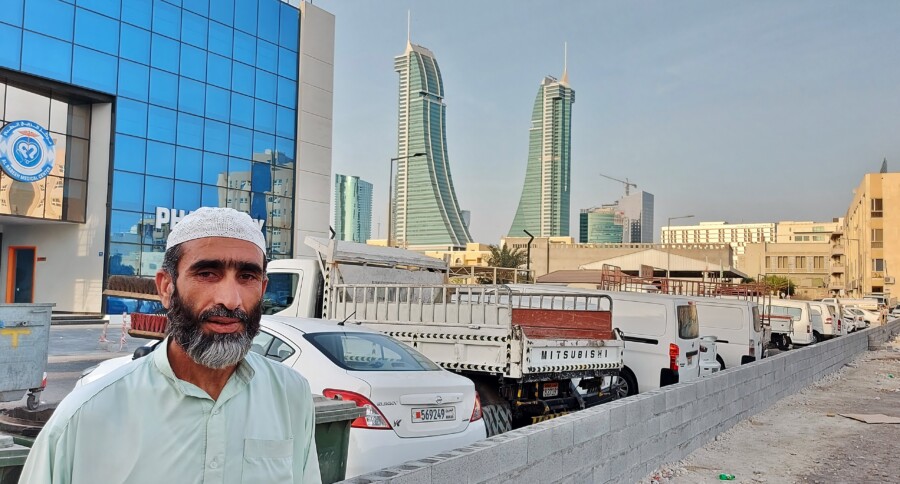
Bahrain, Manama. In the photo an immigrant from Pakistan and the twin skyscraper Bahrain WTC.
As for other cities I wouldn’t call them cities but small settlements where travellers go to see something interesting that is nearby. Such places are for example Riffa where there is a spectacular fort, and Budaiya with its nearby beach. There is also Isa Town where I saw a football stadium but in my opinion it is just a convenient transfer base with a street bazaar. On the way back to Saudi Arabia I also saw the settlement of Al Jasra, near the King Fahad bridge. There is an interesting historical area called Al Jasra House and greenhouses with vegetables.
Bahrain forts and tombs
The big advantage of Bahrain are its forts. The most impressive fort is the fortified Bahrain Fort, with large towers, stone arches and a trench all around. Qal’at al-Bahrain is a 16th-century Portuguese fort, which is the oldest military structure in the Kingdom of Bahrain and today it is also an archaeological centre. I also really enjoyed the Riffa Fort (official name: Sheikh Salman bin Ahmed Fort). There is also a great Arad Fort close to the airport, which I think you should see first, right after landing. Also, from the Bahrain museum I took a boat to the small Bu Maher fort.
There is more history in Bahrain beside forts. I’m talking about the Dilmun, Sar and Janabiya tombs, some of which are over 4,000 years old. The largest ones however are in Aali town and are of course in the colour of the desert. Aali is interesting because the tombs are located in the town and they are large.
Beaches and nature of Bahrain
I think that the very well-kept Al Jazair beach is the best. Also in the same area there is Al Arin Nature Park and nearby the Formula 1 race track. I also really enjoyed Budaiya Beach, easily accessible from Manama. There is also an unattractive and littered Karbabad beach near Fort Bahrain, which is however a good place for picnics after dark. I also took the trouble to see Malqiya beach. There are many beaches throughout Bahrain, although I divide them into swimming beaches, fishing beaches and beaches for picnics where bars always open after dark. In addition, Bahrain also has a few islands, such as Al Dar, and the more distant Hawar islands with colonies of flamingos.

The bay from the side of Muharraq, with a mosque and boats, and Manama in the distance. Bahrain.
I think you should also see the Janabiya camel farm. There you can enjoy their company alone, and a little further there are picturesque fields and palm trees that are taken care of by employees from Bangladesh. There is also a small zoo in Bahrain but I think it’s depressing. The camel farm is better.
Be sure to also see the enigmatic Tree of Life, which is located in the oil fields in the desert.
Further part of the article in preparation.
Map
Location
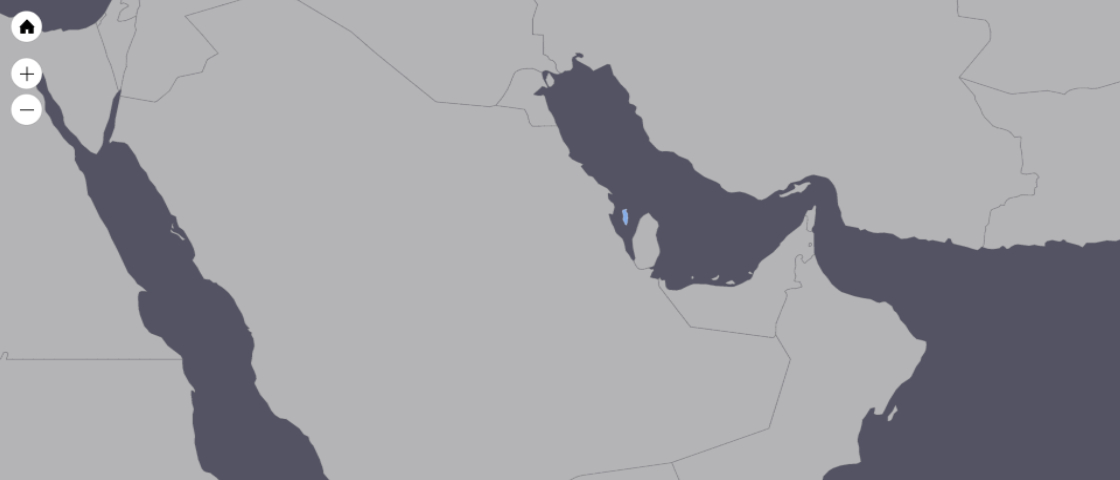
Practical information
Tourist Visa: I got my tourist visa at the land border crossing from Saudi Arabia, at the King Fahad Bridge. I paid 5 BD ($14) for a single entry tourist visa and it allowed me to stay for 30 days.
If someone would like to stay in this very small country longer or make it a base for traveling around the Arabian Peninsula, Bahrain also grants multi-entry tourist visas for only 12 BD ($32). However, it is important to remember that in this case, although the visa is valid for 3 months, one can only stay in the kingdom for 30 days.
If someone wanted to get a visa to Bahrain before the flight from Europe, that’s also possible, although I can’t see the point in it. Then you must enter Bahrain within 30 days from obtaining the visa. A tourist visa can be extended at the immigration office.
Safety: Bahrain is safe for tourists. In my opinion people are helpful, peaceful and like to do business. Many times I experienced kindness of Arabs who like guests from Europe. As everywhere in the Arabian Peninsula there are a lot of workers from the Indian Subcontinent and the Philippines. I never encountered any signs of aggression, although one Indian lost his patience with me and I almost lost mine. . . In my experience Bahrain is safe.
On the other hand, according to information from the governments of Bahrain and the United Kingdom there is a terrorist threat in Bahrain. I didn’t experience it but according to these and many other sources terrorists attack government buildings, police and security forces. As you might expect the attacks are unexpected, but don’t get obsessed. I was in Bahrain for 12 days, it was very safe and I enjoyed it very much. There were no attacks in 2019 but there were in 2020. The Bahraini authorities have caught and tried many terrorists. In my opinion, this is an occasional threat.
One such terrorist group is ‘Beygada Al-Ashtar’ linked to Iran, which among other things plants explosives. Some sources say that Al-Ashtar also attacks hotels, bazaars, bus stations and places visited by tourists; but I don’t believe it. In my opinion this is a dirty and bloody political game between Iran and the countries of the Arabian Peninsula, but specifically against Saudi Arabia. I believe that although terrorist organizations operated in Bahrain, the Western propaganda tries to make Iran look as disgusting as possible.
The security services and police in Bahrain so not sleep. Once I was detained because I took a picture of the embassy and another time because I photographed the palace of the Royal Family. My reason was that they were very impressive buildings and I didn’t even know what I took photos of, until the police explained it to me.
In my opinion the biggest danger in Bahrain is the heat, especially in summer, as it can lead to dehydration and stroke. No terrorist has killed as many people as the hot Arab climate. I wish all a nice trip.
Moving around the country: Public transport has that advantage that it exists but it does not work with tourism in mind. In Bahrain there is a network of buses that can quickly and cheaply get to certain places of interest, but not many. The buses are slow and drive around. The most reliable, fastest and also fairly priced are taxis.
Considering that the traveller’s base is Manama, near the historic Bab Al Bahrain, it is worth discussing transport from this place. Unfortunately from Manama you cannot get by bus to such important places as: Bahrain Fort, Al Jazair Beach, Riffa, Arad Fort, ports to the islands or the Tree of Life. To all these and many other beautiful places you need to organize your own transport, and if there is no taxi,you have to stand on the road and count on hitchhiking.
There are also places like the Janabiya camel farm. It is possible to get close to the farm by bus from Manama on the way to Isa Town, but it’s a long drive and a waste of time to search for it. Better by taxi. Isa Town is a transfer base in Bahrain and from there one can also get to Hamad Town – not far from the Formula 1 race track. From Manama, on the way back to Saudi Arabia one can also get to the very attractive town of Al Jasra, but again the passenger feels as if he was travelling from Poland to Germany via Hungary. I think that I experienced the biggest disappointment when it turned out that there was no bus from Manama to Bahrain Fort.
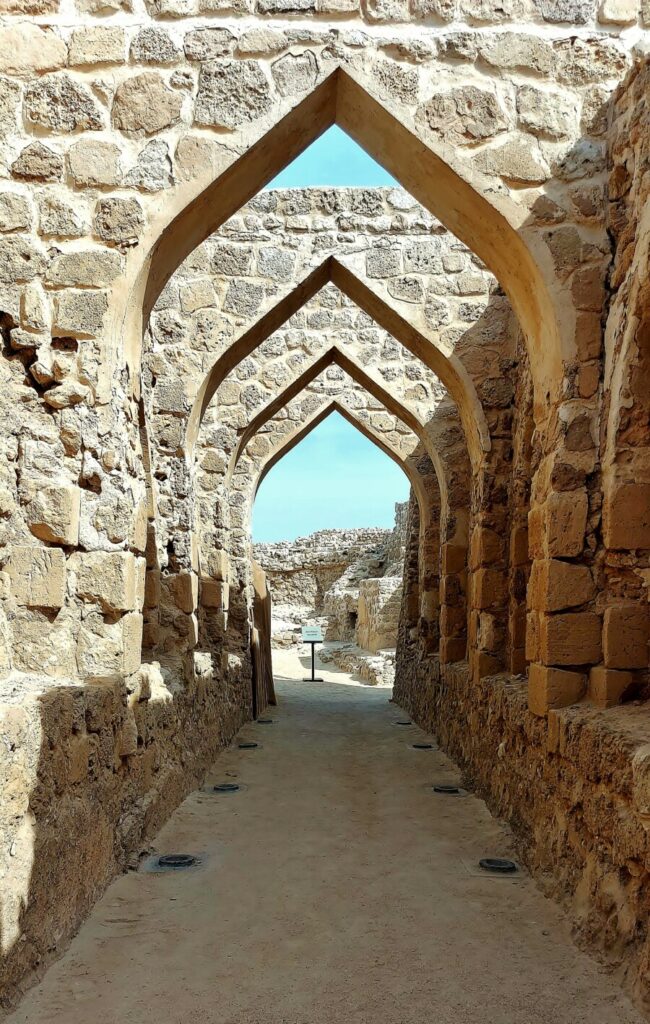
Bahrain Fort and its stylish arches.
It’s not quite that bad, although even this is not much of a consolation. From the Manama bus station I recommend mainly 2 directions which are direct and fast: to the former capital of Bahrain Muharraq and to the pleasant town of Budaiya where there is also a nice beach. After arriving in Bahrain I bought a Go Card, which is a magnetic bus card. It pays off a lot. The card itself costs 500 fils, travel is cheaper than single tickets, and you can’t spend more than 700 fils in one day because there is a cap. There is also a 7-day ticket for 3 BD and a monthly ticket for 12 BD. The buses are clean and air-conditioned. Find out more at https://bahrainbus.bh/en.
For comparison I paid 2 BD for a taxi from Manama to Fort Bahrain or to Muharraq. For further destinations such as to Formula 1 or to the Tree of Life, taxi drivers want even 10 BD. Quite a lot if someone travels on a budget. I have very nice memories of hitchhiking thanks to which I also discovered many other places along the way.
There are also boats to the islands on certain days and times. For example I got to the Dar island for 6 dinars both ways.
Prices: (as of 2022 when 1 BD = £2.14) The Bahraini dinar is the second most expensive currency in the world, only slightly behind the Kuwaiti dinar. As in the case of Kuwait, the same in Bahrain, the highest note is only 20 dinars, while the lowest denomination is 0.5 dinars. In Bahrain, 1 dinar is divided into 1000 fils.
At the entrance to Bahrain I already noticed that there was a very convenient relationship between the Bahrain dinar and the Saudi riyal, which is about removing one zero. At the border I paid 5 dinars for the visa but I could have paid 50 riyals instead. On this small island there is regular traffic between Bahrain and Saudi Arabia, and that’s why sometimes when paying for a hotel or a taxi I paid either one or the other currency or a bit of both. They give change the same way. When I paid 10 dinars I paid 7 dinars and 30 riyals.
Although the Bahraini currency is slightly cheaper than the Kuwaiti currency, hotels in Bahrain are twice cheaper. In Kuwait I haggled 20 dinars for the cheapest hotel, while in Bahrain I paid 8-10 dinars. I would therefore compare hotel prices in Bahrain to those in Saudi Arabia. Hotel prices is always the biggest cost so it is important. Several times I also slept in a tent for free, with camels in the desert.
Food in Bahrain is cheap … as for the countries of the Arabian Peninsula. Depending on the mea it can be from 1-4 dinars. For example glilled skewers with Arabic bread, hummus and a drink in Budaiya cost me 3.5 BD. I discussed the transport prices in detail above, in the section: moving around the country.
Climate: Bahrain has a dry desert climate, mild in winter but very hot in summer. In my opinion there are two main seasons in Bahrain: summer (hot dry) and winter (cooler but still warm and more humid). In summer temperatures in Bahrain range from 36°C-40°C, although once over 47°C was recorded. During the winter period, from December to February, temperatures are much more pleasant and wetter. With great luck the temperature in winter varies between 10°C-15°C but can reach almost 30°C.
In Bahrain the sun shines all year round and the sea is very warm most of the year. Annual rainfall is only 172mm, most of it in the winter. About 92% of Bahrain is covered with desert and there isn’t even one river, although there are valleys that temporarily fill with water after rainfall in the winter season.



